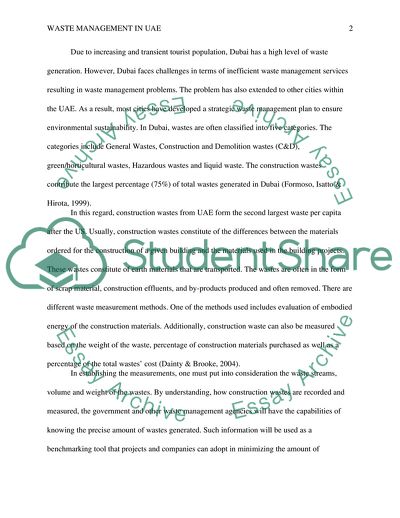Cite this document
(Waste Management in UAE Essay Example | Topics and Well Written Essays - 1250 words, n.d.)
Waste Management in UAE Essay Example | Topics and Well Written Essays - 1250 words. https://studentshare.org/engineering-and-construction/1879781-garbagerecycle-in-the-uae
Waste Management in UAE Essay Example | Topics and Well Written Essays - 1250 words. https://studentshare.org/engineering-and-construction/1879781-garbagerecycle-in-the-uae
(Waste Management in UAE Essay Example | Topics and Well Written Essays - 1250 Words)
Waste Management in UAE Essay Example | Topics and Well Written Essays - 1250 Words. https://studentshare.org/engineering-and-construction/1879781-garbagerecycle-in-the-uae.
Waste Management in UAE Essay Example | Topics and Well Written Essays - 1250 Words. https://studentshare.org/engineering-and-construction/1879781-garbagerecycle-in-the-uae.
“Waste Management in UAE Essay Example | Topics and Well Written Essays - 1250 Words”. https://studentshare.org/engineering-and-construction/1879781-garbagerecycle-in-the-uae.


